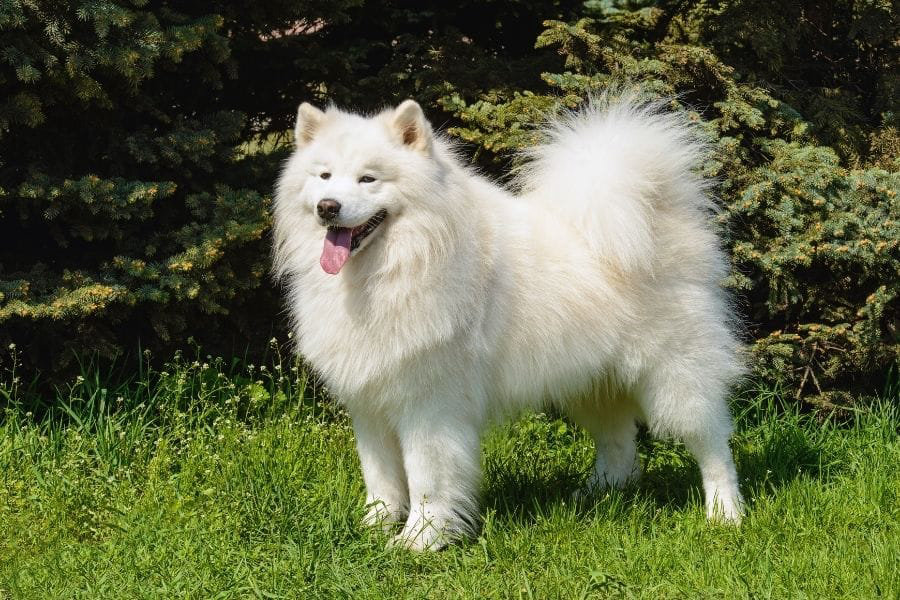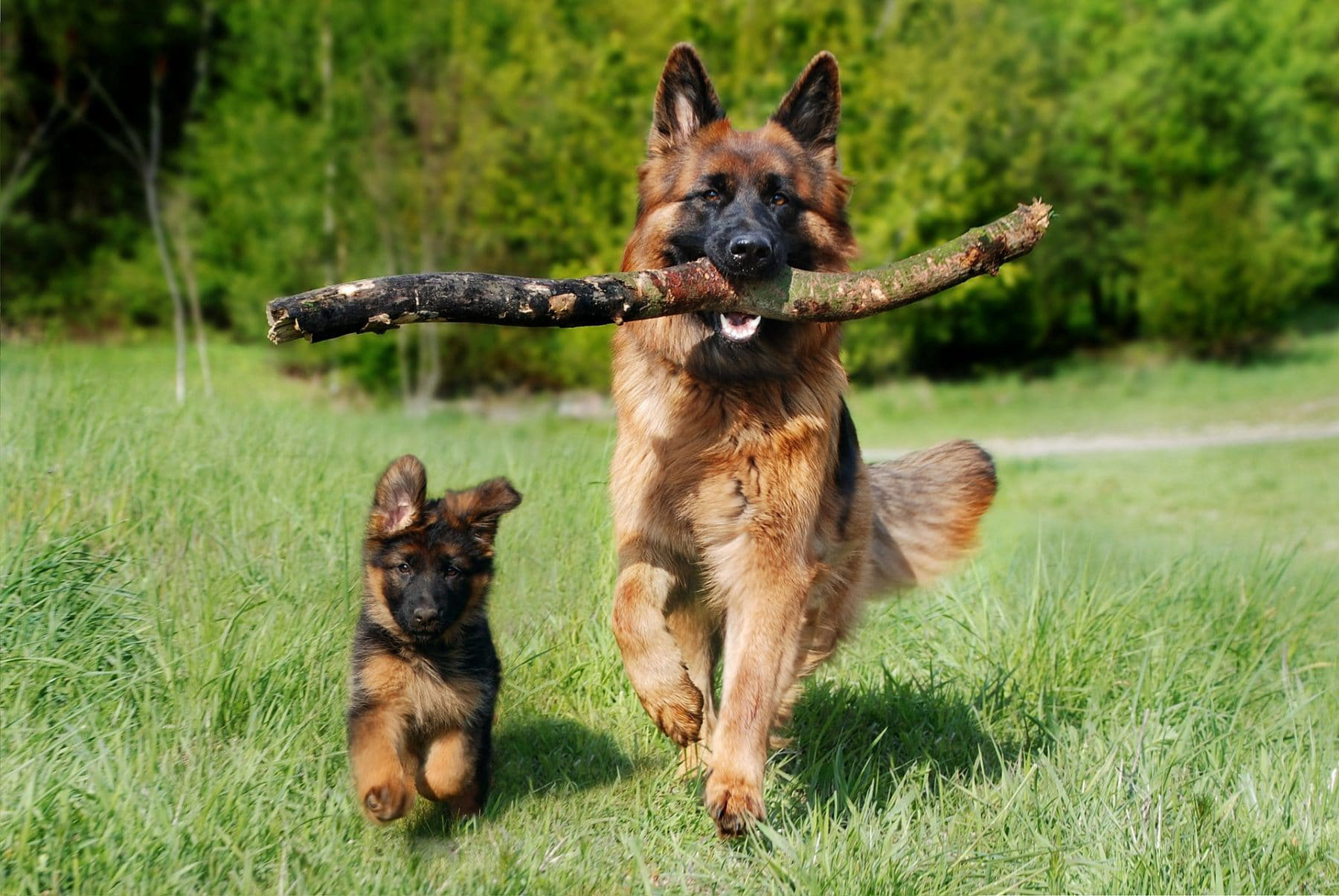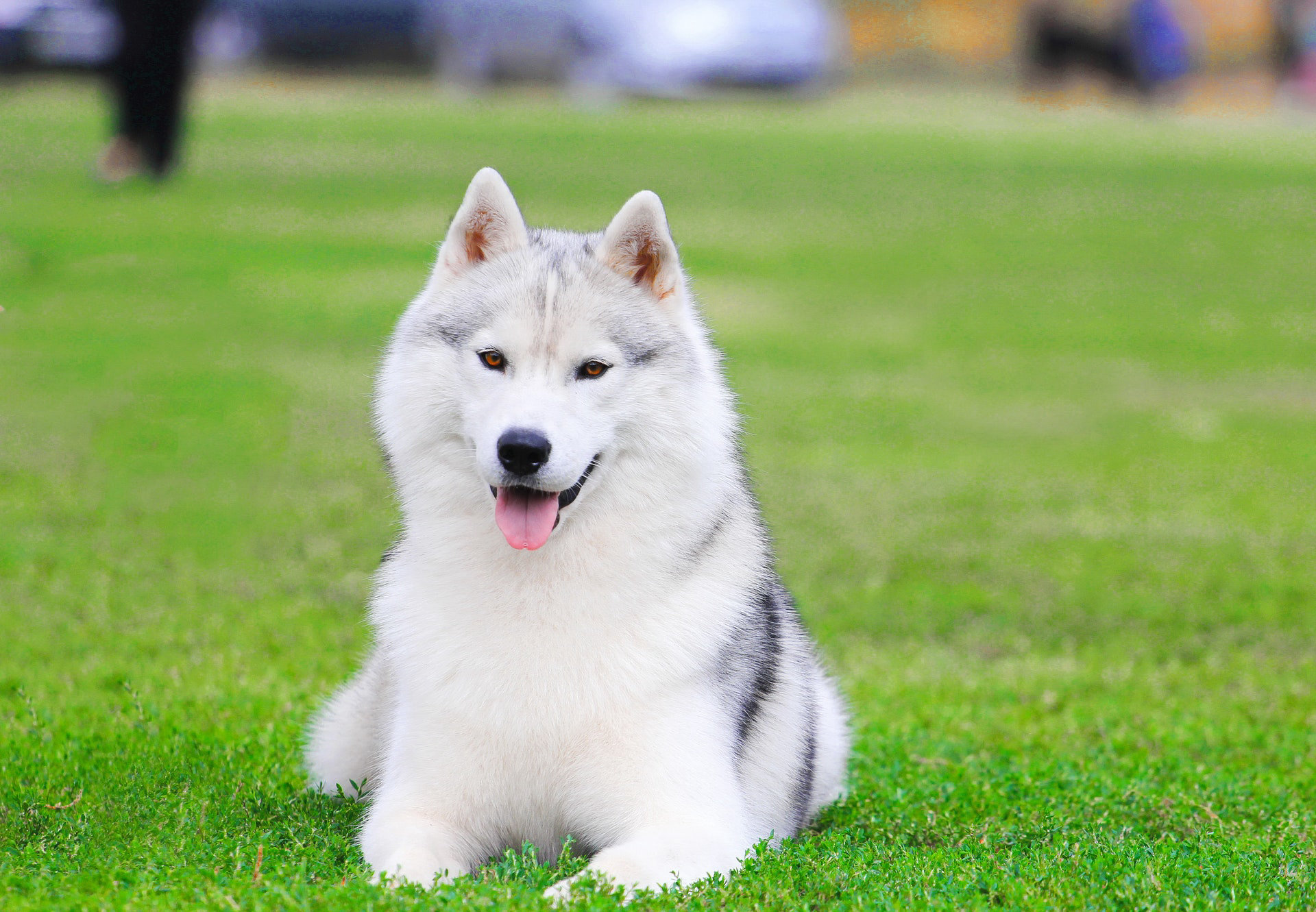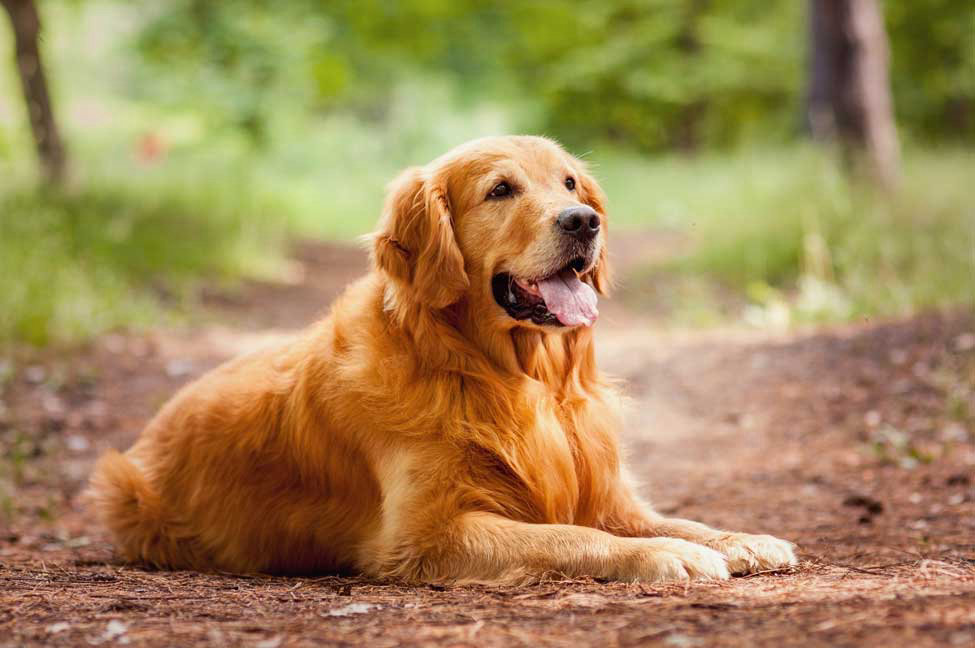How to Prevent and Treat Heat Stroke in Your Dog

Many dogs suffer from heat exhaustion and heat stroke during the summer months. Heat-related illnesses are particularly common in adventure dogs who love to go hiking, biking, running, or visiting their favorite Sniffspot private dog parks with you. All that activity gets their blood pumping!
Dogs are more susceptible to heatstroke than people are because they can't cool themselves as effectively. Canines have a limited ability to sweat through their paw pads. They primarily regulate their body temperature through panting—which is less efficient (and far less effective if it's also humid outside).
Thankfully, the warm weather doesn’t have to be a source of fear. A few key pieces of information can help you keep your pup safe! Here’s what you need to know about heat stroke in dogs.
- What is heat stroke? How does it compare to heat exhaustion and heat stress?
- What are the symptoms of heatstroke in dogs?
- What causes heat stroke in dogs?
- How can you prevent your dog from getting heatstroke?
- How should you treat heat stroke in dogs?
Read on to stay cool as you soak up the sun.
1) Definition: What is heatstroke? Is it the same as heat exhaustion and heat stress?
Heat stroke (sometimes spelled heatstroke) is a more severe form of heat exhaustion. This potentially life-threatening condition occurs when a dog's body temperature rises to dangerously high levels. Scientists call this hyperthermia. "Hyper" means "high" and "thermia" refers to temperature.
Heat stress is the least severe heat illness
You can think of heat stress like the initial precursor to heat exhaustion and heat stroke. At this stage, your dog is just starting to overheat. They'll probably show increased thirst, pant, and might seek out shade.
Heat stress isn't great cause for concern on its own. If you take a break from your activities to cool down, your dog should bounce back quickly without any need for further medical care.
Heat exhaustion comes before heatstroke
Heat exhaustion is the state between heat stress and full-blown heat stroke. At this point, your pup is on their way to a medical emergency.
Heat stroke is the most severe kind of heat-related illness
When your dog enters heat stroke, their raised core body temperature reaches more than 104 Fahrenheit. This is a serious problem. The heat can damage their vital organs and bodily systems if they aren't able to cool down quickly.

2) Symptoms: What are the clinical signs of heat stroke in dogs?
The signs of heatstroke can be subtle at first—like the mild forms of heat stress we talked about above—but the condition can rapidly escalate to life-threatening status. That means we pet parents need to be on the lookout for any indications that our four-legged friends are getting too hot. Remember, they can't tell us how they feel!
Common symptoms of heatstroke in dogs include:
Excessive panting
Dogs regulate their body temperature through panting. If you notice your dog panting excessively— especially in a hot environment or during physical activity—it may be a sign of heat-related distress.
Salivating
Dogs suffering from heat stress may drool more than usual.
Bright red gums and tongue
Another sign of heatstroke is your dog's gums and tongue appearing bright red rather than their usual pink. This change indicates increased blood flow from high body heat.
Rapid or labored breathing
Heat-stressed dogs may exhibit rapid, shallow, or labored breathing as their bodies try to cool down. To our eyes, this often looks like very heavy panting. It's especially concerning if your pup isn't able to slow their breathing down at all—usually after periods of physical activity, our pets will be able to close their mouths for at least a few seconds at a time.
Weakness and collapse
Dogs experiencing heatstroke may become weak, wobbly, or even collapse. This is because heat exhaustion can lower their blood pressure.
Vomiting and diarrhea
Overheated dogs may vomit or have diarrhea.
Elevated heart rate
An increased heart rate is a common symptom of heat-related illness as your dog's body tries to pump blood and circulate it more effectively.
Seizures or tremors
In severe cases, dogs with heatstroke can experience seizures or trembling.
Unresponsiveness or disorientation
Dogs suffering from heat stress may become disoriented. They can show signs of confusion or become unresponsive to cues they usually know well.
3) Causes: What causes heatstroke in dogs?
Heatstroke is usually caused by exposure to high ambient temperatures. The risk of heat-related illness increases if the air is also humid—humid environments make it harder for your dog to regulate their body temperature through panting!
Heatstroke is more likely to occur in brachycephalic breeds (like French Bulldogs, Pugs, and Boxers). Flat-faced pups are more prone to severe heatstroke and medical emergencies because they have difficulty panting efficiently.
Common factors that can lead to heatstroke in dogs
- Excessive exercise: Overexertion or prolonged exercise in hot weather, especially without access to cool water and shade, can lead to heatstroke. A 2020 study found that exercise is the most common trigger of heat-related illness in dogs.
- High environmental temperatures: Leaving a dog in a parked car on a hot day, even with windows cracked, can quickly create excessive head leading to heatstroke.
- Lack of shade: If a dog is exposed to direct sunlight and does not have access to water and shade, they are at increased risk.
- Predisposing factors: Like underlying medical conditions and structural problems.

4) Prevention: How can you prevent your dog from getting heatstroke?
Here are some tips to help you keep your dog safe from suffering a raised core body temperature.
Know your dog's predisposing factors
Every individual dog's risk of heat stroke is different. Is your dog brachycephalic? Are they elderly? Do they struggle to take breaks on their own? These traits can boost their odds of heat-related illness.
Provide plenty of water
Ensure your dog always has access to fresh, clean water. This is paramount during hot weather, of course—but your pup needs to drink up even if you're hiking in the shade or with a strong breeze, too! Sometimes heatstroke is actually more likely on days we owners think are cool but that are still warm enough to affect our pets. (Much like how hikers can be at increased risk for hypothermia when temperatures are in the 40s, because they don't think it's cold enough to require serious prevention.)
No matter how you slice it: Hydration is crucial to help your canine companion regulate their body temperature. Plenty of water is one of the best ways to avoid thermal injury.
Offer shade
Create a shaded area for your dog to rest in when outdoors. Avoid leaving them in direct sunlight for extended periods. Be mindful of how the sun changes position throughout the day!
Avoid hot pavement
On hot days, avoid walking your dog on hot pavement or surfaces. These can both burn their paw pads and expose them to a higher concentration of warm air immediately above the asphalt.
Limit exercise in excessive heat
Avoid vigorous exercise during peak ambient temperatures. Instead, schedule walks and playtime during cooler parts of the day, like early morning or late evening. If you're going through a heat wave where there's no such thing as a "cooler part of the day"? Consider some indoor enrichment and mental exercise instead!
Never leave your dog in a parked car
Even with the windows cracked, a parked car can quickly become dangerously hot. Limited ventilation and a confined space are surefire ways to push your dog's core body temperature to unsafe levels.
Avoid overexertion
Be mindful of your dog's energy levels. Avoid pushing them too hard during play or exercise, especially in hot weather.
Watch your dog closely
Keep an eye on your dog for any signs of heat-related distress, like the excessive panting, drooling, and weakness mentioned in the previous section. Act quickly if you notice any symptoms of elevated body temperature.
5) Treatment: How can you treat heatstroke in dogs?
If you suspect that your dog is suffering from heatstroke, take immediate action to cool them down and seek emergency veterinary care.
Cool your dog down
- Move your dog to a shaded or cool area.
- Apply cool water (not ice-cold) to their body, particularly around the neck, head, and paw pads.
- Encourage them to drink small amounts of fresh water if possible.
Why not ice-cold water or ice packs? These can constrict blood vessels—which actually hinders the cooling process. Lukewarm or cool water are best.
Seek veterinary care
Heatstroke can be a life-threatening emergency. Prompt veterinary attention saves lives!
Even if your dog appears to recover from a thermal injury, internal organ damage may have occurred. Have them examined by a veterinarian to ensure they're okay in the long run.
Veterinary treatments might include intravenous fluids (fluid therapy), close observation of vital signs, and other supportive care.
Prevent heatstroke in the future
Prevention is always the best approach.
Avoid exposing your dog to extreme temperatures without proper shade, ventilation, and access to water. Be especially cautious during hot weather. Know your dog's predisposing factors. And never leave your dog in a parked car—even for a short period—unless you have a robust temperature control system with real-time notifications.
Review of this Article
There is so much misinformation out there, and we want to make sure we only provide the highest quality information to our community. We have all of our articles reviewed by qualified, positive-only trainers or veterinarians.
This is the professional that reviewed this article:
Shannon Finch
AnimalKind Training M.Ed. Humane Education Karen Pryor Academy. Certified Training Partner. Certified Tellington TTouch and TTEAM Practitioner
Most recent articles

What Is a Reactive Dog? A Complete Guide
Is your dog overly excited or fearful around other dogs? Do they bark, lunge, or whine? You might have a reactive dog. Many dog owners face this challenge. Understanding what a reactive dog is is the first step to helping them. This guide explores the common causes of dog reactivity, explains what makes a dog reactive, and offers practical tips and resources. Let's work together to build a stronger bond with your dog and enjoy stress-free walks.

Positive Dog Body Language: Signs of a Happy Pup
* All Sniffspot articles are reviewed by certified trainers for quality, please see bottom of article for details *

Best Dog Parks Near Me in Austin (Public & Private)
Looking for the perfect dog park near me in Austin? This guide has you covered. We'll explore Austin's best dog parks, from Zilker Park's popular off-leash area to smaller, quieter options. Plus, we'll introduce you to Sniffspot, where you can rent private dog parks near me. Let's find the perfect spot for your furry friend!

Shih Tzu Ownership: Ultimate Guide for New Owners
So, you're thinking about adding a Shih Tzu to your family? Excellent choice! These pups are known for their affectionate personalities and gorgeous coats. But before you bring one home, let's cover some essential shih tzu advice for new owners. This guide, created with insights from experienced Shih Tzu owners, will help you prepare. We'll explore everything from whether Shih Tzus are loyal and affectionate, to if they can be service dogs. Plus, we'll share practical tips on training, grooming, and health. Ready to become a Shih Tzu expert? Let's go!

Dog Parks Near Me: Chicago Guide (Public & Private)
Finding the perfect dog park near me in Chicago can feel overwhelming. But don't worry! This guide explores Chicago's best dog-friendly spots, from popular public dog parks near me to private Sniffspot Chicago locations. We'll cover everything you need for a safe and fun outing, including a handy checklist and tips on dog park etiquette. Whether you want a quick walk, a chance for your pup to socialize, or the best off-leash dog park experience, we've got the perfect spot for you and your furry friend.
Related articles
Top dog guides per area
Dog training guides

Dog Food Aggression: Why You Shouldn't Punish It
Does your dog ever growl when you walk by their food dish? Maybe they get possessive of treats, carrying them far away and giving you side-eye when you start to approach — or snarling at your other pets or children if they get too close.

Scent Training for Dogs: A Beginner's Guide
As almost every dog owner is aware, the nose of a dog is an amazing thing. Just as they can pick up sounds we can’t hear, their sense of smell and ability to pick up scents is well beyond ours. In fact, dogs have 40 times the number of olfactory receptors as humans.

Service Dog Training Costs: DIY vs. Pro
More than 80 million Americans rely on their service dogs to help them navigate the world. Task-trained assistance animals perform a huge range of life-changing—in many cases, life-saving—services: These dogs act as eyes for visually impaired handlers, provide mobility support, alert to seizures and blood sugar crashes, interrupt anxiety attacks, remind their people to take medications, and so much more.

How to Deal With Puppy Potty Training Regression
You thought those dreaded middle-of-the-night potty breaks were over. You were finally free from cleaning up puppy puddles. Then, suddenly, your furry friend starts having accidents again. It's frustrating, right? This puppy potty training regression is more common than you think. Don't worry; we'll help you get your pup back on track. We'll cover the common causes, offer practical solutions, and give you actionable steps to tackle this challenge together.

Dirty Dog Syndrome: Causes, Solutions, and Prevention
It's a cringe-worthy moment every dog owner dreads: your furry friend chowing down on something truly disgusting. If your dog has a penchant for poop, you're dealing with coprophagia. It's more common than you think, and thankfully, often manageable. This article explores the reasons behind dirty dog syndrome, from instinct to learned behavior. We'll also give you practical tips to help break this unpleasant habit.
Dog enrichment guides

Top 10 Dog Water Parks in the US
Do you have a water-loving dog looking to burn some energy? There are countless dog parks to visit throughout our country — but some of them become far too hot in the midday sun to be safe for your pets to play. That’s why we’ve put together a list of some of the best dog water parks throughout the United States! At these locations, your pup can frolic, splash, and swim to their heart’s content.

Best Toys for Herding Dogs: Keeping Your Pup Happy & Engaged
Herding dogs are amazing, intelligent companions. But that also means they need more than just a simple game of fetch. Finding the right toys for herding dogs is key to keeping them happy and stimulated. This article explores some of the best toys for herding dogs, including options specifically for breeds like Border Collies and Australian Shepherds. We'll help you discover the perfect herding toys for dogs to tap into their natural instincts and keep them entertained for hours.

Ultimate Guide: Dog Toys for Aggressive Chewers
Does your dog destroy every toy you give them? Is your house littered with remnants of fabric and stuffing of all different sizes? Are you tired of investing in “indestructible” toys only for your pup to still dismantle—or worse, get bored of—them in just a few days?

Daily Exercise Calculator: How Much Exercise Does Your Dog Need?
Everyone knows dogs need exercise, but how much is enough? Walks are great, but creating a truly balanced fitness plan means understanding your dog's specific needs. This post helps you develop a daily exercise calculator for your dog, considering breed, age, and lifestyle. We'll cover fun activities, understanding exercise intensity, and recognizing when your pup has had enough. Let's create a plan that keeps your dog happy and healthy!

Complete Guide To Herding With Dogs
* All Sniffspot articles are reviewed by certified trainers for quality, please see bottom of article for details *
Dog reactivity guides

Rottweiler Aggression: Truth vs. Myth
Many dogs have gotten a bad reputation over the years for being "dangerous breeds." Rottweilers are among them. Like pit bulls and other large, blocky-headed types of dogs, these powerful and beautiful animals are often assumed to be aggressive.

What Is a Reactive Dog? A Practical Guide for Owners
Does your dog suddenly transform into a barking, lunging Tasmanian devil on walks? It's stressful for both of you. If this sounds familiar, you might have a reactive dog. Understanding what is a reactive dog is the first step to calmer walks. We'll explore the common triggers and give you actionable strategies to manage and modify this behavior. Let's turn those stressful walks into enjoyable outings.

How to Socialize a Reactive Dog: A Step-by-Step Guide
Does your dog display reactivity to other pets or people? Maybe they’re a new rescue pup and are still settling into your home. Or they were sick growing up, so you missed their critical socialization period. Possibly they’ve had a bad experience after being raised as a normal puppy.

What Is a Reactive Dog? A Complete Guide
Is your dog overly excited or fearful around other dogs? Do they bark, lunge, or whine? You might have a reactive dog. Many dog owners face this challenge. Understanding what a reactive dog is is the first step to helping them. This guide explores the common causes of dog reactivity, explains what makes a dog reactive, and offers practical tips and resources. Let's work together to build a stronger bond with your dog and enjoy stress-free walks.

Best Online Dog Training for Reactive Dogs: A Practical Guide
Does your dog's reactivity make walks stressful? You're not alone. Many dog owners face similar challenges. This guide offers practical advice and support for managing reactivity, including finding the best online dog training for reactive dogs. We'll connect you with reactive dog support groups, share training tips, and explore resources like the best dog training app for reactive dogs. Let's build a stronger bond with your dog, together.
* All Sniffspot articles are reviewed by certified trainers for quality, please see bottom of article for details *
Sniffspot community guides

The State of Public Dog Parks Across the United States
From 2009 to 2020, there was a 40 percent increase in the development of public dog parks. Designated spots for canine exercise have become commonplace in every major city in North America — many pet owners won’t even consider renting an apartment that doesn’t have its own fenced-in pet area for their canine companions.

How This Family is Affording Their Dream Property Through Renting it Hourly to Dogs
Thousand Oaks, California has been a safe haven for Sniffspot host, Jen, since childhood. Having grown up in busy Santa Barbara, Jen, an introvert from an early age, would seek out solitude and serenity away from tourists attractions and droves of people visiting from elsewhere. “My grandparents own 60 acres about a 30 minute drive from here, and I grew up spending every summer and every holiday visiting them on the ranch,” Jen explained. “In Santa Barbara, we wouldn't go to the beach on the weekend because that's where everybody was, so you'd find places off the beaten path where the tourists weren't. For me, the ranch was just my happy place.”

Host Tips: Ellen K. What Makes Sniffspot Successful for Me
Ellen is the host of Country Pasture Getaway, one of Sniffspot's most popular sniff spots. She has taken the time to write up the lessons she has learned about how to be a great sniff spot host.

How this Oregon Farmer is Making a Business From Renting Her Land to Dogs
Just 20 minutes outside of the busy city of Portland, Oregon, and settled right on the banks of the Columbia River, you’ll find what countless visitors have flocked to the area in search of – mountain views, crisp, clean air, and running water for miles. What you might not expect to find, however, is a hidden oasis designed just for dogs and their people, owned and operated by a farming couple and enjoyed by visitors on two legs, and four.

Host Tips: Fran T. Providing Great Guest Service at our Spot
Fran is the host of Ranch Setting, one of Sniffspot's most popular spots. She has taken the time to write up the lessons she has learned about how to be a great Sniffspot host.
Top dog trainers in the US

The Best Dog Trainers in the United States of 2025
This is a list of the top dog trainers in the United States, based on votes from the Sniffspot community and the general public.
The Best Dog Trainers in Seattle, WA of 2025
This is a list of the top dog trainers in Seattle, WA, based on votes from the Sniffspot community and the general public.
The Best Dog Trainers in Portland, OR of 2025
This is a list of the top dog trainers in Portland, OR, based on votes from the Sniffspot community and the general public.
The Best Dog Trainers in Los Angeles, CA of 2025
This is a list of the top dog trainers in Los Angeles, CA, based on votes from the Sniffspot community and the general public.
The Best Dog Trainers in New York, NY of 2025
This is a list of the top dog trainers in New York, NY, based on votes from the Sniffspot community and the general public.
City dog parks guides

Top 10 Indoor Dog Parks: A US Guide
Looking for a space to play with your dog no matter what the weather’s like outside? Look no further than our list of the best indoor dog parks in the United States! These climate-controlled spaces are growing in popularity as pet ownership increases throughout the country. As a bonus, many of them also offer dog training, boarding, grooming, or daycare services on the premises.

15 Best Dog Parks in the US: Public & Private
Searching for the best off-leash dog parks near you in the United States? Whether you're looking for public dog parks with open spaces or private, fully-fenced areas, this comprehensive guide has you covered. Discover top-rated parks across the country, plus essential tips on what to bring and what to expect for your next adventure.

Dog Parks Near Me: Las Vegas Edition
Looking for the perfect dog park near me in Las Vegas? You're in luck! This guide explores all the best options for your pup, from public dog parks to private dog parks near me on Sniffspot. We'll help you find the ideal spot for playtime, socializing, and fresh air. Plus, we'll cover essential etiquette and safety tips to ensure a happy visit for everyone. Get ready for some tail-wagging fun!

Best Sniffspot Locations: Private Dog Parks Near You
Looking for the perfect dog park? Whether you need a wide-open public space or a private, fenced-in spot, this guide will help you find the best dog parks across the US. We'll cover top-rated public parks, the perks of private dog parks, and even explore Sniffspot locations – giving your pup a safe and fun place to play. Ready to find your dog's new favorite spot? Let's go!

Sniffspot: Portland's Best Private Dog Parks
Ready to discover Portland's best dog parks? Whether you're looking for a public park or the unique experience of a private Sniffspot, this guide has you covered. We'll help you find the perfect spot for your pup, with tips on what to bring, how to prepare, and even understanding dog body language. Plus, we'll explore some top Portland dog parks, including public and Sniffspot options, so you can plan your next dog-friendly adventure in the City of Roses.
Dogs breeds

German Shepherd Dog: Breed Facts, Experience and Tips from 9K+ Owners
Discover the German Shepherd Dog, a breed celebrated for its intelligence, loyalty, and versatility. Known for its impressive size and smooth, graceful movements, German Shepherds excel in various roles, including as guide, therapy, bomb detection, and police dogs, while being a devoted family companion.

Labrador Retriever: Breed Facts, Experience and Tips from 9K+ Owners
Discover the Labrador Retriever, a breed celebrated for its playful nature, affectionate temperament, and trainability. Labradors are known for their friendly demeanor and adaptability, making them perfect family companions and versatile working dogs. As one of the most popular types of retrievers, Labs are ideal companions for various lifestyles and are recognized by the American Kennel Club (AKC) as an excellent breed for families.

Golden Retriever: Breed Facts, Experience and Tips from 9K+ Owners
Discover the Golden Retriever, a popular breed celebrated for its affectionate, playful, and trainable nature. Considered a large dog, Golden Retrievers were originally bred in Scotland for hunting and retrieving game beginning in the 1860s. Today, they're recognized by the Kennel Club and the American Kennel Club (AKC) as one of the most beloved companion dog breeds.

American Staffordshire Terrier: Your Complete Guide
Think American Staffordshire Terriers are tough? Think again. While their muscular build might intimidate some, these dogs are known for their playful and loyal personalities. This guide draws on the experience of nearly 10,000 AmStaff owners to reveal the truth about this often misunderstood breed. Want to learn more about caring for an American Staffordshire Terrier? You're in the right place.

Australian Shepherd Facts: Breed Info & Care Guide
Discover the Australian Shepherd, an AKC breed celebrated for its trainable, playful, and affectionate nature. Despite its name, the Australian Shepherd is actually a native breed to the United States, originally developed to breed on farms and ranches. Considered a medium dog, Australian Shepherds were bred for herding beginning in the 1950s. As one of the high-energy breeds, Aussies are known for their boundless energy and need for regular exercise, including aerobic exercise.
Top dog names in the US

Top 1,000 Most Popular Dog Names
Looking for the perfect dog name for your new pup? We have created filterable lists of dog names from our database of hundreds of thousands of Sniffspot users. You can filter by gender, breed and state to find the most cute, unique and creative dog names.
Most Popular Male Dog Names
Looking for the perfect dog name for your new male pup? We have created filterable lists of male dog names from our database of hundreds of thousands of Sniffspot users. You can filter by gender, breed and state to find the most cute, unique and creative male dog names.
Most Popular Female Dog Names
Looking for the perfect dog name for your new female pup? We have created filterable lists of female dog names from our database of hundreds of thousands of Sniffspot users. You can filter by gender, breed and state to find the most cute, unique and creative female dog names.
Most Popular Golden Retriever Names
Welcome to our comprehensive list of Golden Retriever dog names, curated from our vast database of Sniffspot users. Filter through hundreds of thousands of options by gender, breed, and state to discover the most adorable, original, and imaginative names for your beloved Golden Retriever.
Most Popular Labrador Retriever Names
Welcome to our Labrador Retriever dog names page! Here you can browse through filterable lists of names for your beloved furry friend, ranging from cute and classic to unique and creative options. Our database of hundreds of thousands of Sniffspot users ensures you'll find the perfect name for your Labrador Retriever, whether you're seeking a name for a male or female, based on breed or state.
Top dog rescues in the US

The Best Washington Dog Rescues & Shelters in 2025
This list showcases the top dog rescues & shelters in Washington. These remarkable organizations have been recognized for their unwavering dedication to the well-being of countless dogs.
The Best Oregon Dog Rescues & Shelters in 2025
This list showcases the top dog rescues & shelters in Oregon. These remarkable organizations have been recognized for their unwavering dedication to the well-being of countless dogs.
The Best California Dog Rescues & Shelters in 2025
This list showcases the top dog rescues & shelters in California. These remarkable organizations have been recognized for their unwavering dedication to the well-being of countless dogs.
The Best Florida Dog Rescues & Shelters in 2025
This list showcases the top dog rescues & shelters in Florida. These remarkable organizations have been recognized for their unwavering dedication to the well-being of countless dogs.
The Best New York Dog Rescues & Shelters in 2025
This list showcases the top dog rescues & shelters in New York. These remarkable organizations have been recognized for their unwavering dedication to the well-being of countless dogs.






















